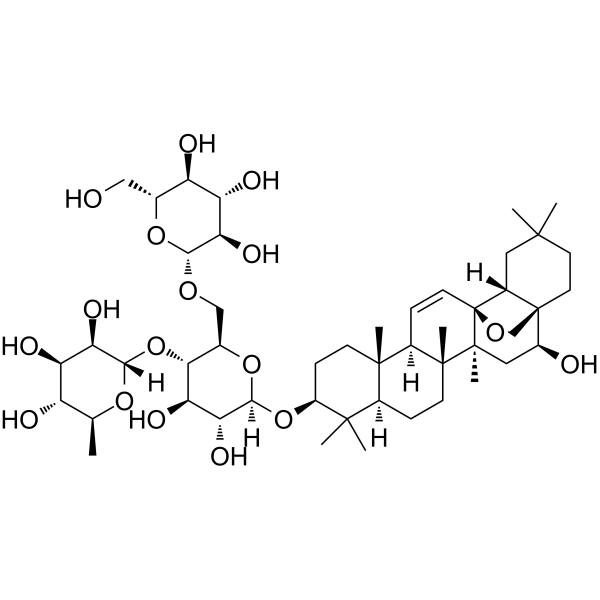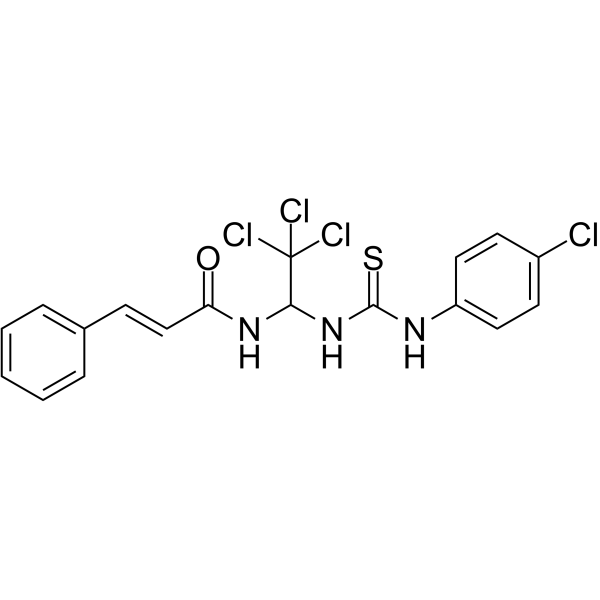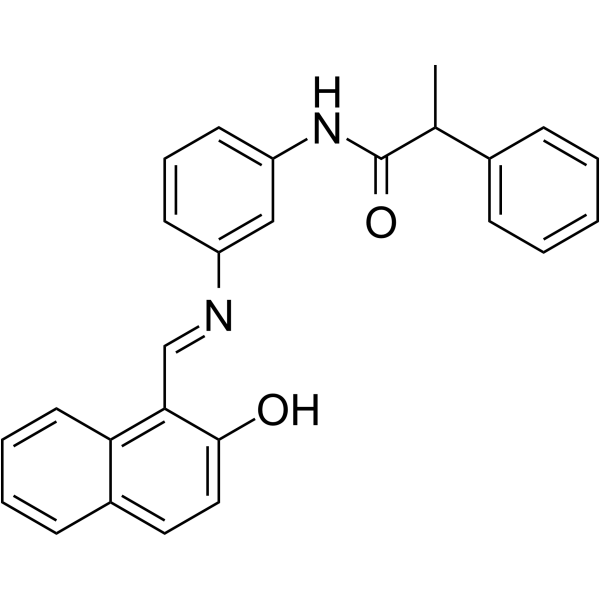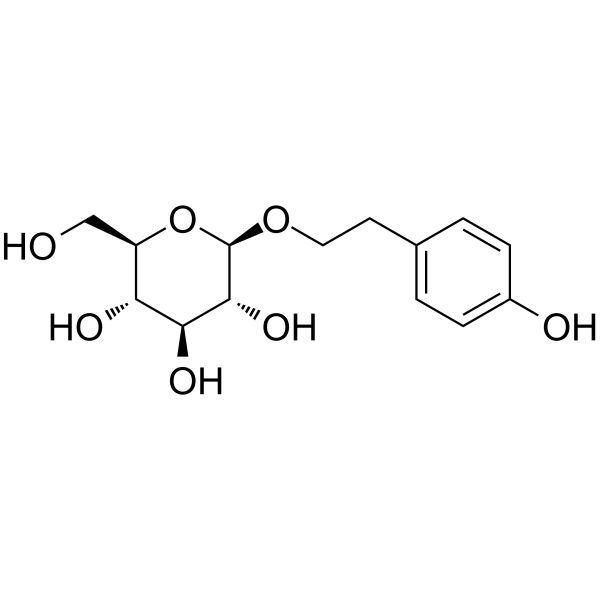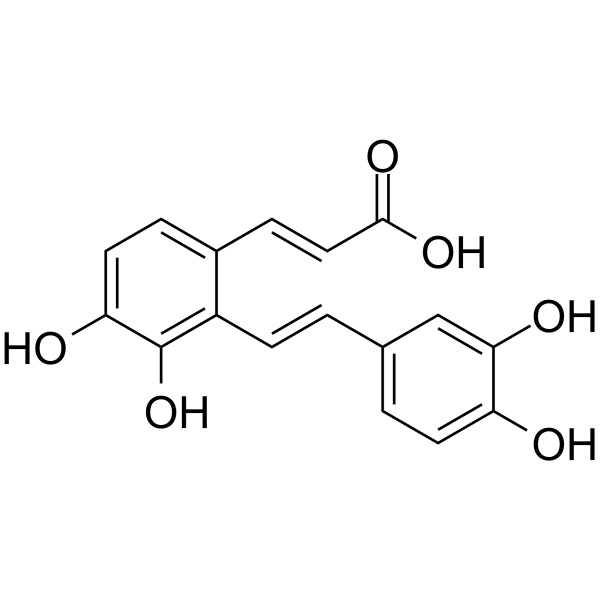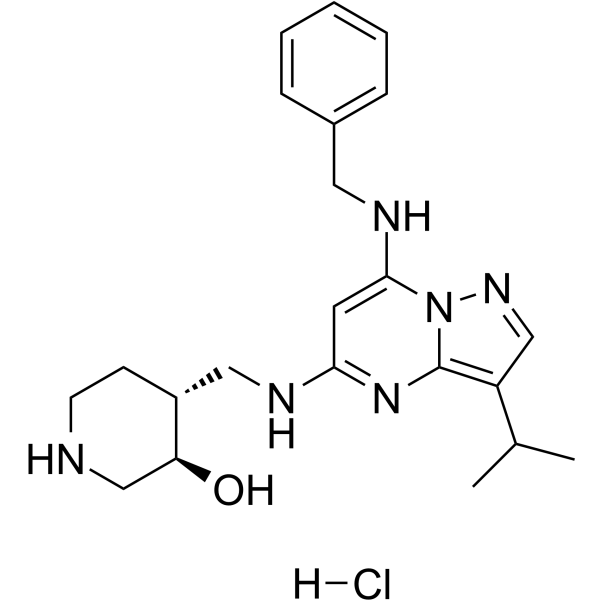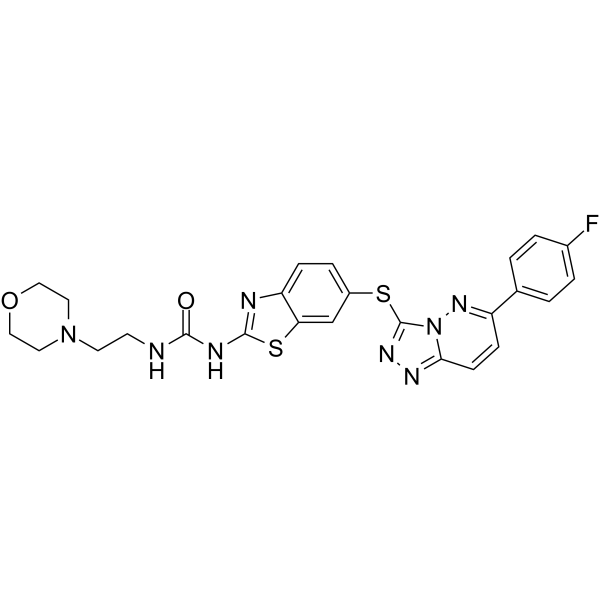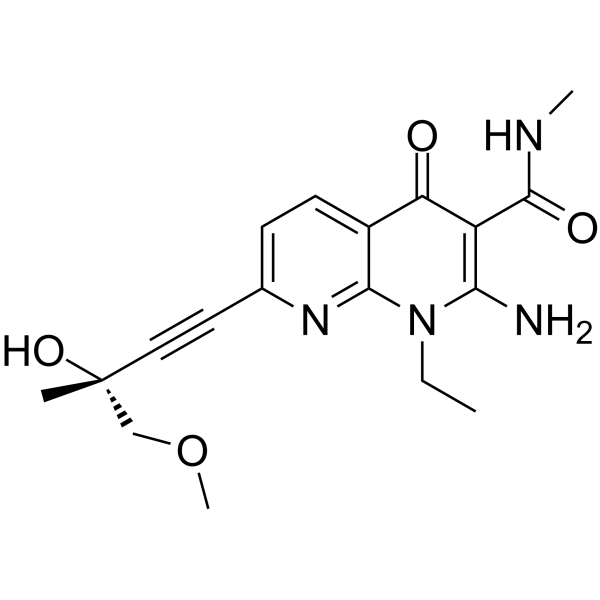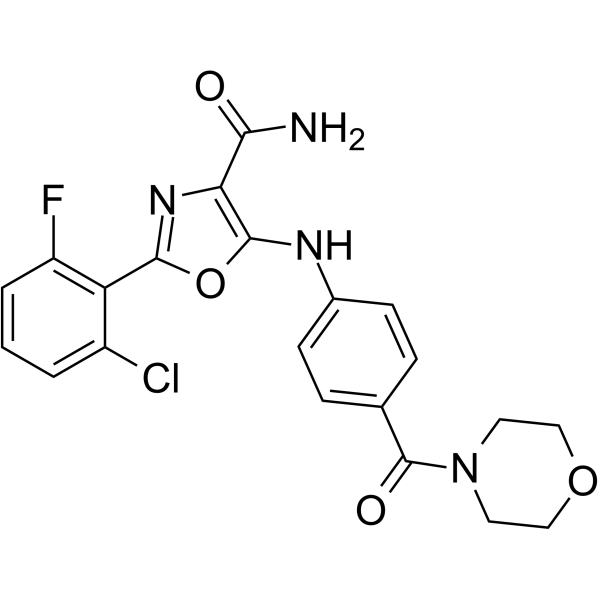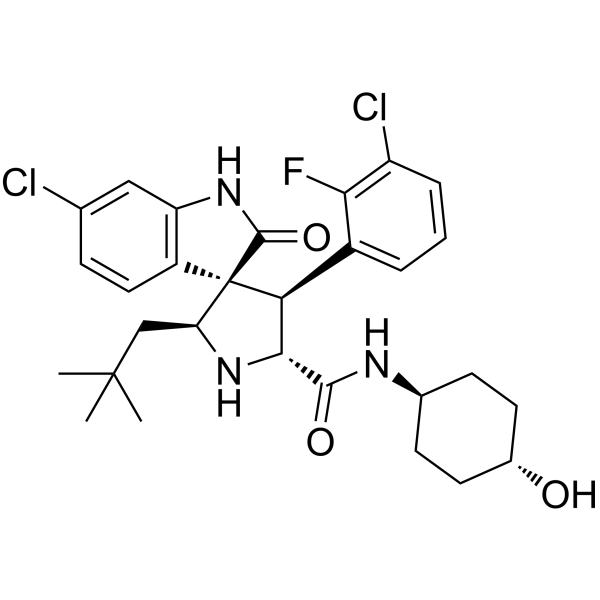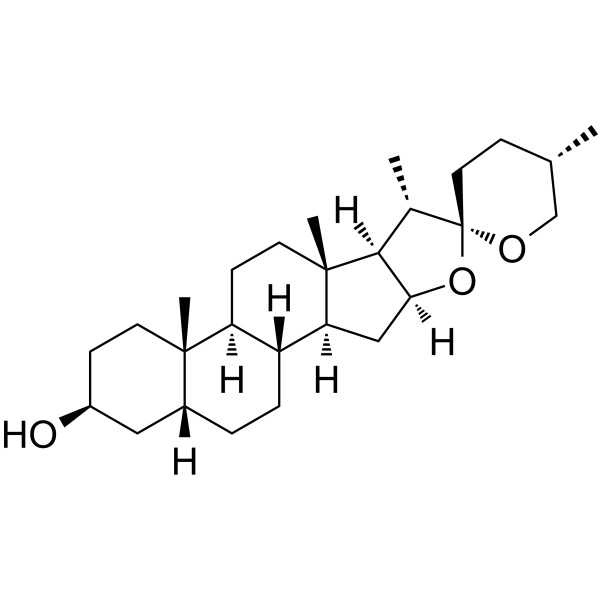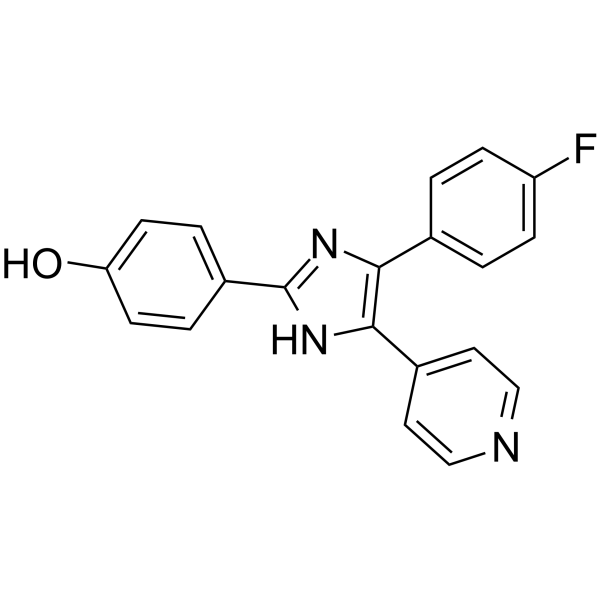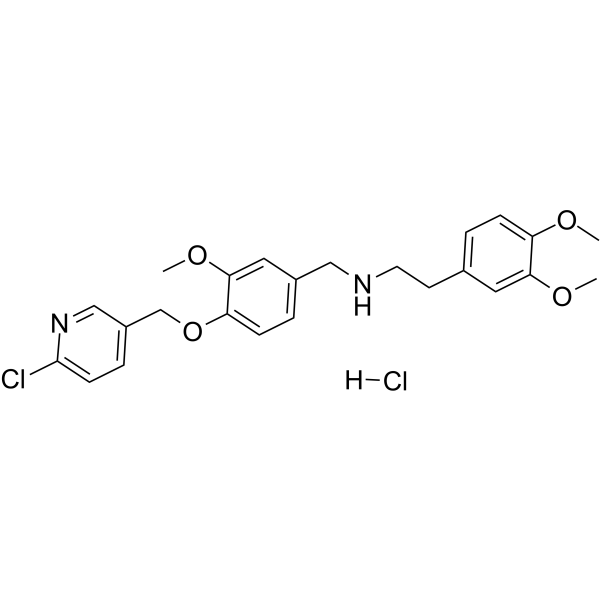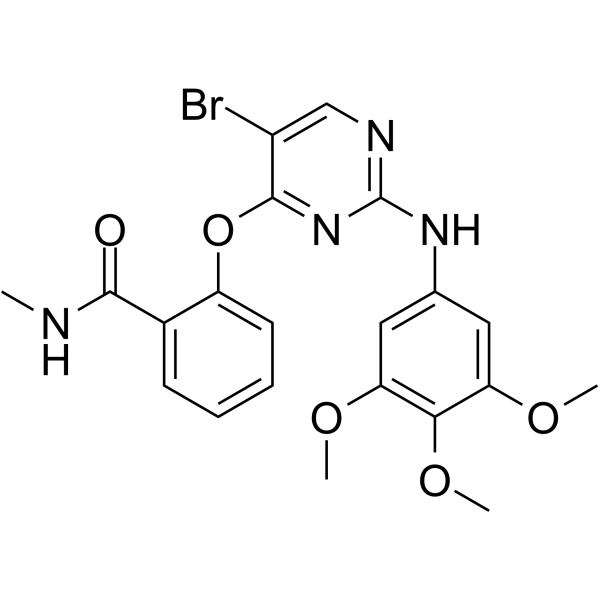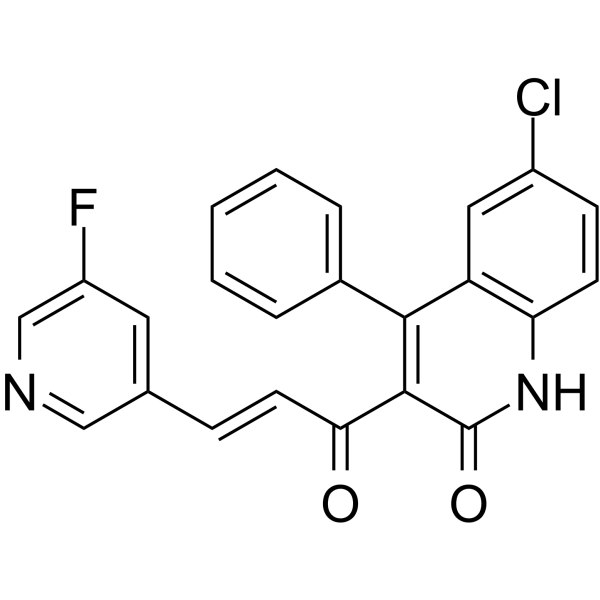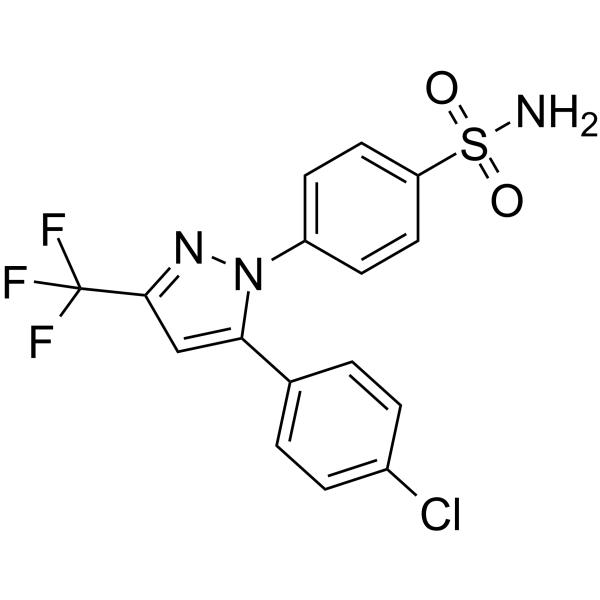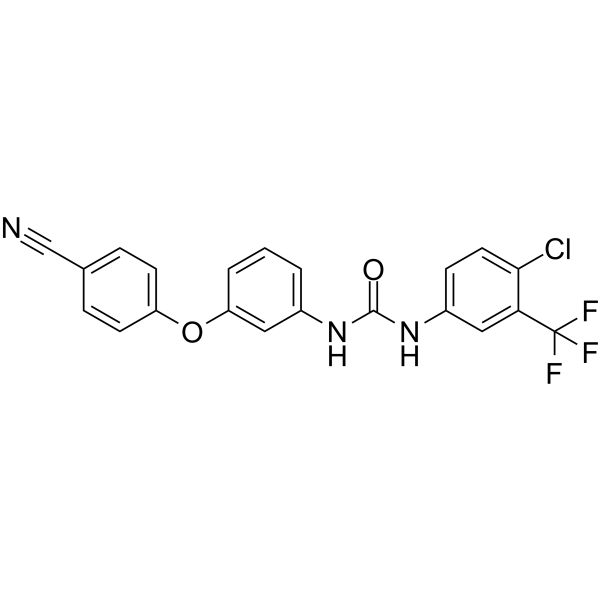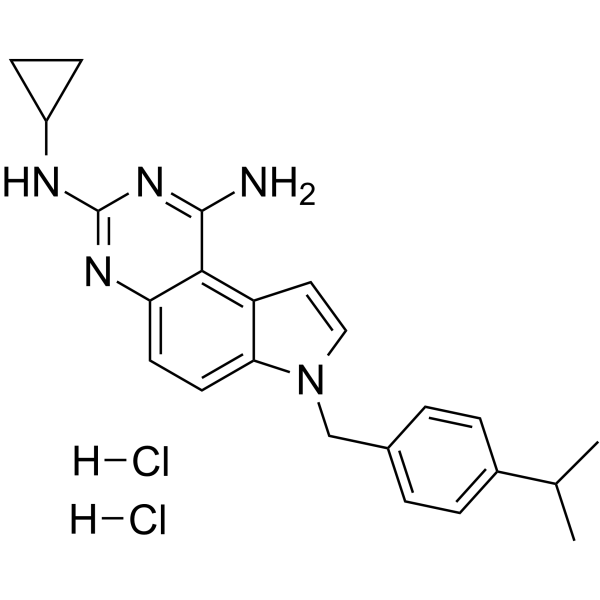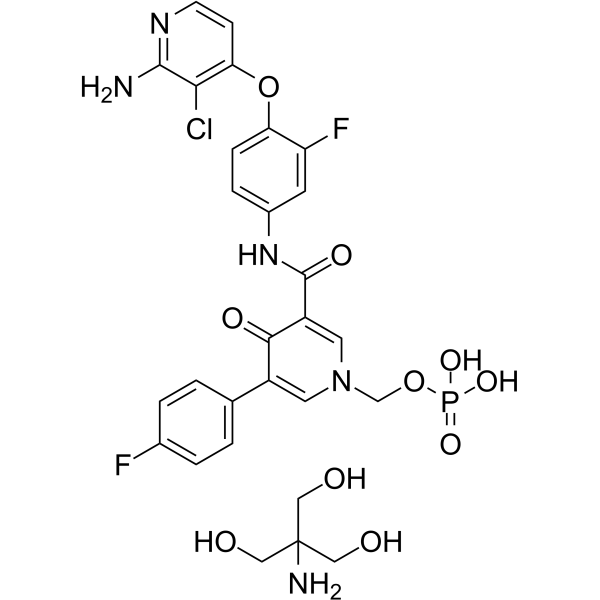|
BP10962
|
Saikosaponin C
|
|
|
|
|
Saikosaponin C efficiently inhibited LPS-induced apoptotic cell death via inhibition of caspase-3 activation and caspase-3-mediated-FAK degradation.
|
|
BP10183
|
Sal003
|
|
|
|
|
Sal003, an effective cell-permeable analog, inhibitis the eIF2α phosphatase.
|
|
BP10133
|
Salermide
|
|
|
|
|
Salermide is an inhibitor of Sirt1 and Sirt2, causing strong cancer-specific apoptotic cell death.
|
|
BP10055
|
Salidroside
|
|
|
|
|
Salidroside is a bioactive phenolic glycoside compound isolated from Rhodiola crenulata. It is a prolyl endopeptidase Inhibitor.
|
|
BP10659
|
Salvianolic acid F
|
|
|
|
|
The role of our hybrid molecules, an analogue of Salvianolic acid F, in compelling the glioma cells towards apoptosis by specifically perturbing the concentration of glutathione along with caspase 6.
|
|
BP10805
|
Samuraciclib hydrochloride
|
|
|
|
|
Samuraciclib hydrochloride is a potent, selective, ATP competitive and oral active CDK7 inhibitor with IC50 of 41 nM. The selectivity of Samuraciclib hydrochloride is 45-, 15-, 230- and 30-fold higher than CDK1, CDK2 (IC50 is 578 nM), CDK5 and CDK9 respectively. Samuraciclib hydrochloride inhibits the growth of breast cancer cell lines with GI50 values between 0.2-0.3 μM. Samuraciclib hydrochloride has anti-tumor effects.
|
|
BP10142
|
SAR125844
|
|
|
|
|
SAR125844, a potent and highly selective inhibitor of the MET receptor tyrosine kinase (RTK), for intravenous administration. (IC50 value of 4.2 nmol/L)
|
|
BP10533
|
SAR131675
|
|
|
|
|
SAR 131675 is a potent and selective VEGFR3 inhibitor with an IC50 of 23 nM.
|
|
BP10558
|
SAR-20347
|
|
|
|
|
SAR-20347 is an inhibitor of TYK2, JAK1/2/3 (IC50: 0.6/23/26/41 nM).
|
|
BP10351
|
SAR405838
|
|
|
|
|
MI-773 (SAR405838) is an orally available MDM2 antagonist with Ki of 0.88 nM. Phase 1.
|
|
BP10319
|
Sarsasapogenin
|
|
|
|
|
Sarsasapogenin is a steroidal sapogenin, that is the aglycosidic portion of a plant saponin. It is named after sarsaparilla (Smilax sp.), a family of climbing plants found in subtropical regions. It was one of the first sapogenins to be identified, and the first spirostan steroid to be identified as such.
|
|
BP10613
|
SB 202190
|
|
|
|
|
SB 202190 is a selective and cell-permeable inhibitor of p38 MAPK (IC50s: 50/100 nM for p38α/p38β).
|
|
BP10229
|
SB1317
|
|
|
|
|
SB1317 is a potent inhibitor of cyclin dependant kinases (CDKs), Janus kinase 2 (JAK2), and Fms-like tyrosine kinase-3 (FLT3).
|
|
BP10084
|
SBE13 Hydrochloride
|
|
|
|
|
SBE13 hydrochloride is an effective and specific PLK1 inhibitor (IC50: 0.2 nM); no inhibition om Aurora A kinase, Plk2/3.
|
|
BP10860
|
SBI-0206965
|
|
|
|
|
SBI-0206965 is a potent, selective and cell-permeable autophagy kinase ULK1 inhibitor with IC50 of 108 nM for ULK1 kinase activity and 711 nM for ULK2.
|
|
BP10820
|
SBI-0640756
|
|
|
|
|
SBI-0640756 (SBI-756) is a first-in-class inhibitor that targets eIF4G1 and disrupts the eIF4F complex.
|
|
BP10746
|
SC-236
|
|
|
|
|
Sc 236 is an orally active and selective inhibitor of COX-2 (IC50 of 0.005 μM and 17.8 μM for COX-2 and COX-1, respectively).
|
|
BP10469
|
SC-43
|
|
|
|
|
SC-43 is a potent and orally active agonist of SHP-1 (PTPN6). SC-43 inhibits the phosphorylation of STAT3 and induces cell apoptosis, and with anti-fibrotic and anticancer effects.
|
|
BP10241
|
SCH79797 dihydrochloride
|
|
|
|
|
SCH79797 dihydrochloride is an effective and selective antagonist of protease activated receptor 1 (PAR1) with an IC50 of 70 nM and a Ki of 35 nM. SCH79797 dihydrochloride has antiproliferative and pro-apoptotic effects.
|
|
BP10192
|
SCR-1481B1
|
|
|
|
|
SCR-1481B1 has activity against cancers dependent on Met activation and also has activity against cancers as a VEGFR inhibitor
|
